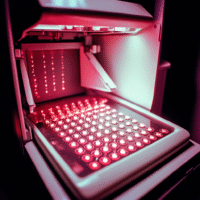Understanding the RECOVER Trial Results
What is Vagus Nerve Stimulation (VNS)?
VNS is a treatment for people with severe depression that hasn’t improved with other therapies. It involves a device that stimulates the vagus nerve, which can help improve mood.
What Did the RECOVER Trial Study?
The RECOVER trial looked at how well VNS works for patients with treatment-resistant depression (TRD). It compared active VNS to a fake version (sham VNS) to see who benefits the most.
What Were the Key Findings?
- Who Benefits from VNS? Patients with a history of treatments like electroconvulsive therapy (ECT) or transcranial magnetic stimulation (TMS) had worse outcomes with sham VNS but did better with active VNS.
- Comorbid Anxiety Disorders: Patients with anxiety disorders generally did better overall but had a smaller benefit from VNS compared to those without anxiety disorders.
What Does This Mean for Patients?
If you have severe depression and have tried treatments like ECT or TMS, VNS might be a good option for you. It can provide significant benefits compared to not receiving stimulation.
What Can Clinics Do with These Findings?
- Identify patients who have a history of ECT or TMS and discuss VNS as a treatment option.
- Monitor patients with anxiety disorders closely to understand their response to VNS.
What Should Clinics Track?
- Changes in depressive symptoms using simple questionnaires.
- Improvements in daily activities and quality of life.
AI Tools to Consider:
Clinics can use AI tools to analyze patient data and predict who might benefit most from VNS therapy, helping to personalize treatment plans.
Step-by-Step Plan for Clinics:
- Start Small: Begin by identifying a few patients who fit the criteria for VNS treatment.
- Educate Staff: Train your team on the findings of the RECOVER trial and how to discuss VNS with patients.
- Implement Tracking: Use simple tools to track patient progress and outcomes.
- Evaluate and Expand: After initial cases, evaluate the results and consider expanding VNS treatment to more patients.
For More Information:
You can read the full study on the effectiveness of VNS in the RECOVER trial here: ClinicalTrials.gov – RECOVER Trial.






























